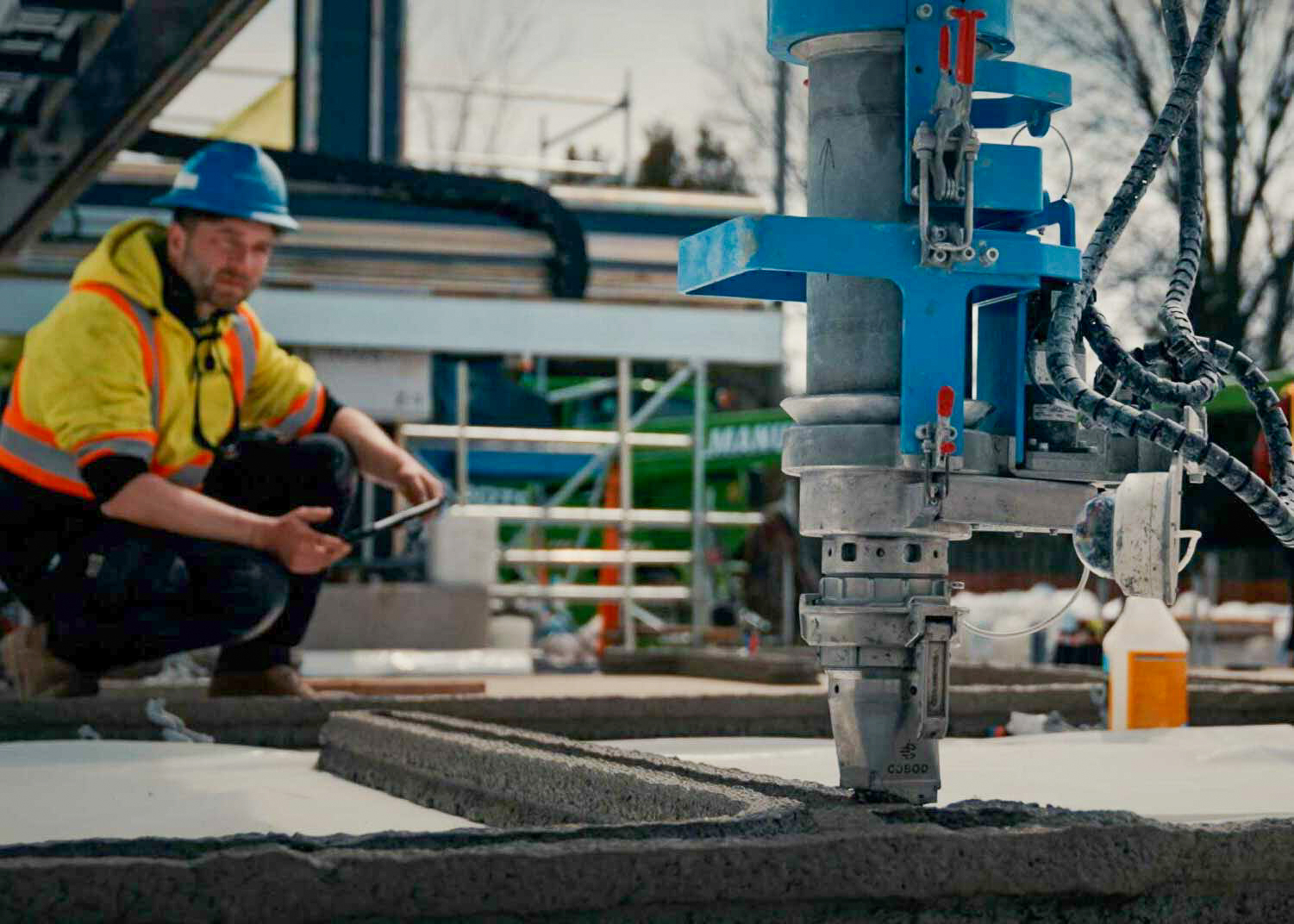
Canada is in the midst of a generational housing crisis that is impeding the plans of young Canadians to own a home in their lifetime. Canada’s housing market is among the most unaffordable in the world with one of the highest house-price-to-income ratios among Organization for Economic Co-operation and Development member states. In Canada, housing prices soared over 355 percent between 2000 and 2021 while median income increased by only 113 percent.
Policy makers and political leaders have begun to shine a much-needed spotlight on the challenge in recent years and have created many programs and initiatives designed to increase the supply of housing in Canada over the course of this decade.
One area that has received less attention is the development of a new approach to home building that has the potential to increase the pace of housing development and reduce costs by changing the way in which residential housing is built. Enter the world of 3D Home Printing.
Many are familiar with the advancement of 3D Printing in recent years and the creation of numerous new items that can be created on the spot as a result. This includes everything from consumer products such as eyewear and furniture, industrial application in automotive and aerospace prototypes and additive manufacturing to the creation of medical and dental care products such as prosthetics and orthodontics. 3D printing is still evolving with more research and testing but has started to become a more visible reality in many homes and businesses.
One area that shares this pattern is 3D concrete house printing. This innovative approach uses large 3D printers to create residential housing at a build site and incorporates new building technologies, adapted materials and a dramatically different process for building or “printing” the house structure.
“All 3D printing is done using robotics to place concrete,” says Ted Urbancic, Managing Director of Kingston area home builder nidus3D. “It's completely different from what is currently done because, instead of having people laying blocks or doing ICF, we’re basically coming in and having a machine build the concrete in a continuous method that lays out the building structure.”
For many, the excitement with 3D concrete printing is the prospect it creates for speed of production. For example, a four-unit home of 2400 square feet might take a builder on average 2-4 weeks or more to construct the structure with a crew of seven or eight people working full time. nidus3D can complete the same structural build in 3.5 days with a crew of three people to operate the equipment. At first glance, it might seem like an easy fix for home builders in the current housing crisis we face, but there are several challenges to overcome before that vision can become reality.
This has been recognized by the Canadian federal government, which has turned to Smith Engineering Researchers Joshua Woods and Amir Fam (a Tier I Canada Research Chair Professor in Climate Change Resilient Infrastructure at Smith Engineering) through a newly awarded ‘Research and Knowledge Initiative’ Grant from the Government of Canada and Housing, Infrastructure and Communities Canada (formerly Infrastructure Canada) tasking them to investigate the structural behaviour of 3D printed concrete and the collection of both laboratory and field data that is required to advance the technology to move beyond pilot projects and into widescale commercial adoption to address Canada’s housing needs.
According to Fam and Woods, there are several challenges that confront the industry in allowing home building via 3D concrete printing to become more widely adopted.
One is the evolution of the 3D concrete printing technology to literally reach new heights so that it can be beneficially applied to structures of two stories and higher. According to Fam and Woods, the current state of 3D concrete print technology begins to meet significant challenges when it starts to move beyond a single or two-story structure, particularly in seismic zones, because 3D concrete printing is a continuous process that is rotating horizontally as it progresses. This makes it increasingly difficult as vertical reinforcement, which is currently challenging to place within the process, is necessary as the height of the structure increases.
“When you print continuously in a horizontal process of building layer by layer, vertical rebar embedded in the thin layers creates an obstacle in the 3D printing path and therefore you need more creative ways to reinforce vertically to resist wind and earthquakes,” says Fam. “Josh and I are working hard to be among the first to pioneer a new technique that I used in the past with other technologies. It’s among many ideas we are looking at, but in truth it’s a race as the whole world is trying to think the same way and someone is going to get there first.”
Another area of concern is the current state of building codes in Canada. Building codes are minimum standards set for structural systems to ensure buildings meet the requirements for structural integrity, fire safety, electrical systems, plumbing and many other elements that support overall habitability. They have a considerable impact on how homes are designed and built. Codes are beneficial but at times can also restrain attempts to innovate the building process.
“Nothing slows down spread of technology and construction more than lack of codes,” says Woods, an Assistant Professor in the Department of Civil Engineering at Smith Engineering. “The technology may be new to many but more importantly it doesn't always fit perfectly within most existing standards.”
A 3D printed concrete wall is not reinforced concrete. It is not block masonry. Designers, engineers, and builders need to know how to understand its properties and how it fits within a code that they are required to adhere to.
According to Ted Urbancic at nidus3D, codes are the biggest obstacle facing the industry where builders, who are rightfully risk averse, only doing what is allowed or is “up to code.”
Codes for 3D concrete printing might exist at the international level, but within Canada, our process dictates that we generate our own codes based on what we build here. That process can take between three and five years to complete and does not include the additional time to have adoption of codes enacted at the various levels of government who regulate this area.
“The way things are done, you have your national code, you have your provincial interpretation of the code and then modifications and finally municipal code adoption and how municipalities interpret the code,” says Urbancic. “That leads to different interpretations of what’s feasible, what’s not feasible and ultimately what gets built.”
Woods and Fam believe that a key component to getting advances in code standards is getting research in place to take away any questions or doubts.
“A lack of codes, design guides can create hesitancy in the sector as builders naturally seek to protect themselves legally from a legal and risk management perspective,” says Woods. “One way to address those concerns is to do the research and testing to study how this new 3D printed concrete material behaves and how does it compare to traditional materials. For example, does it behave like regular reinforced concrete? Or is it more like masonry; both of which have well established standards and design procedures. If this is the case, we can utilize these existing standards that engineers are already very familiar with. That could be a helpful approach to get the required adoption of standards and codes.”
This focus aligns with the perspective of nidus3D who have indicated that their initial projects have adapted 3D concrete printing technology to conform to the current building code standards instead of taking more full advantage of what the technology innovations can offer.
“We work within the current masonry code and have been able to build 25 structures on that basis,” says Urbancic. “We’re basically marrying the tech with what's been done before but if you can get the appropriate approvals for structural engineering, design and architecture, the true benefits of 3D printing technology could be expanded and allow for optimized building materials specifically aligned with 3D concrete printing. Testing and getting those changes adopted within the building code in Canada would go a long way to moving this forward and making a difference in our current housing crisis.”
